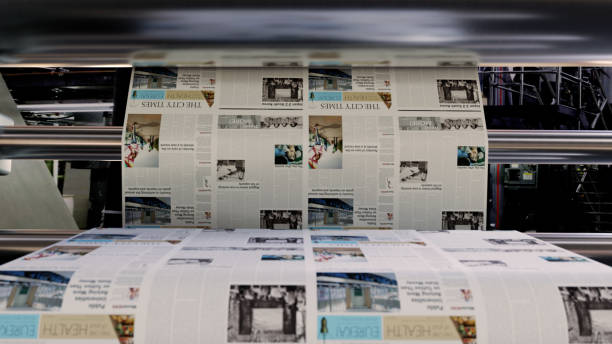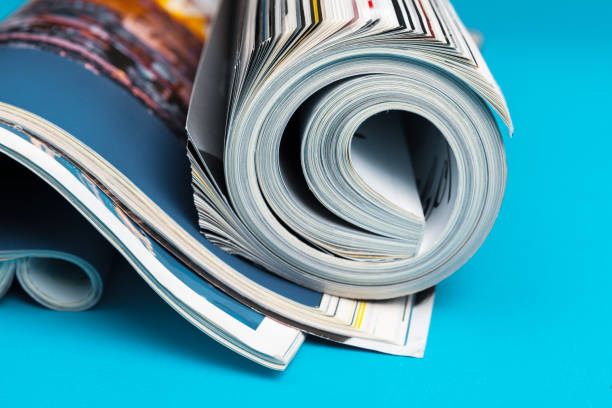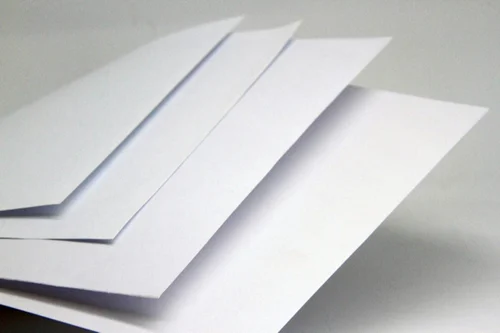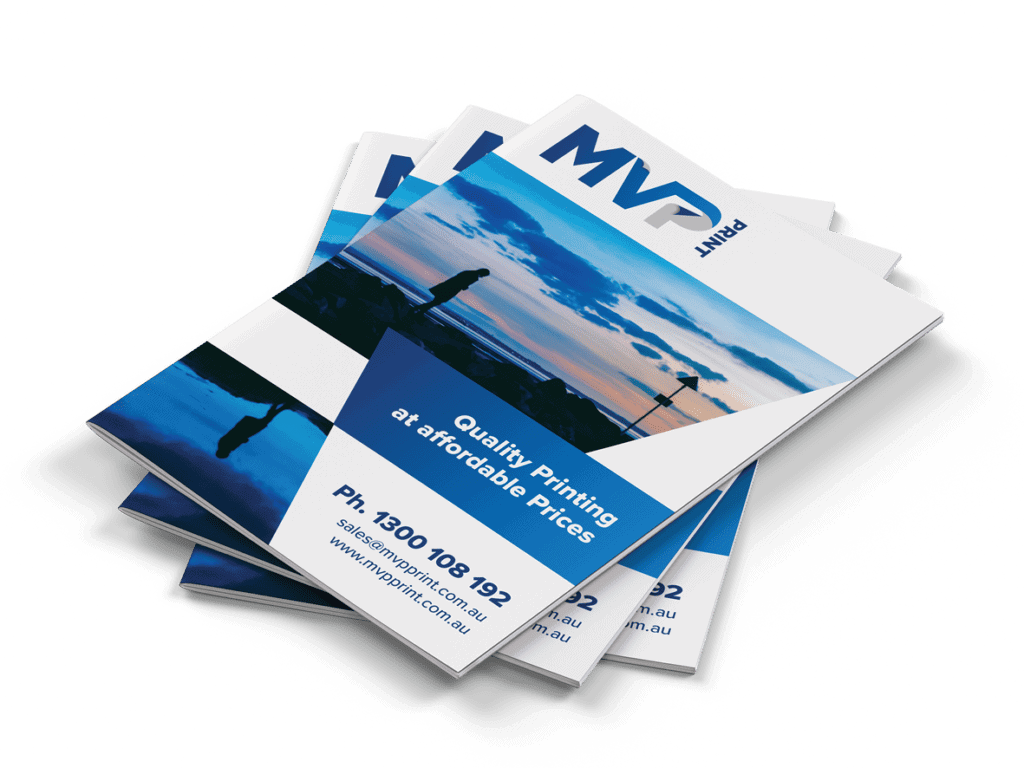
Magazines are key in Aussie daily life. They give us the low-down on entertainment, news, fashion, and politics. Even with the rise of digital tech, many people aged 25 and up still prefer reading magazines in print. And Magazines dont have to break the bank. Cheap Magazine Printing is more than a viable alternative.
Over 7,400 print magazines are available in the Australia. with “Special Interest” mags growing the most. This boom keeps the demand high for affordable magazine printing. This piece dives into what matters for cheap magazine printing. It covers things like binding styles, sizes, ink types, paper quality, and advice from a pro in magazine printing. These points are useful if you’re a self-publisher, small business, or a big outfit. Knowing this info can make your custom magazine printing process smoother. Plus, it’ll help your magazine shine among the rest, thanks to insights from cheap magazine printing experts.
The Significance of Print Magazines in Today’s Digital Age
Even with digital media growing, many Australian adults still love print magazines. About 73% of them enjoy reading a printed magazine in its traditional form. They find it more fun and engaging than reading online.
Printed Magazines: A Preferred Medium for Adults
Print magazines are special because you can touch them and focus without any digital distractions. They offer a more immersive and relaxed reading experience. This makes it easier for adults to focus and understand what they’re reading, thanks to the high-quality results provided by professional magazine printers.
The Enduring Appeal of Print Publications
Many adults still choose print magazines over digital ones. In 2023, print magazine sales in Australia went up by 4.1%. This increase shows that more people are looking for a break from digital screens. “The feel of a printed material helps in better memory retention, and the consistency in advertising design across various platforms increases brand trust and loyalty.” Print magazines are finding new ways to stay important. Niche magazines are becoming more popular, and new printing tech makes creating small batches cheaper. In Australia, 122 new print magazines started in 2021. This shows that print is still beloved. Digital magazine printing offers customization, quick turnaround time, and business growth opportunities.
A Brief History of Magazine Publishing

Magazines started in the 17th century in Western Europe. The first one, “Erbauliche Monaths-Unterredungen,” began in Germany in 1663. It ran until 1668. After that, many learned magazines showed up all over Europe, like in France, England, and Italy.
But fun magazines didn’t come about until 1672. That’s when France started printing “Le Mercure Galant.” In England, the 18th century brought hit essay magazines like “The Tatler” and “The Spectator.” People loved them and reading these helped kick off the magazine world we know today.
Fast forward to the United States in 1741, and you’ll find Andrew Bradford and Benjamin Franklin. They made America’s first magazines in Philadelphia. During the 18th century, about 100 magazines covered everything from local news to big national stories.
In the 19th century, magazines got cheaper, making them more popular. “Cosmopolitan” and “Munsey Magazine” led this change in the late 1800s. They dropped their prices, and more people started to read magazines.
By the late 19th and 20th centuries, technology had made printing magazines easier. Things like the rotary press and adding pictures made magazines look better. Most important, ads started helping pay for magazines, making them more affordable and popular.
Then, the internet came in the late 20th century. Suddenly, people could get information online and many stopped buying magazines. This change hit hard in the early 2000s, with some magazines closing or moving to online only.
But, despite these challenges, the magazine industry lives on. It continues to change, keeping up with new tech and what readers want. The story of magazines teaches us how print media has stayed strong even with online competition.
Year Event 1663 The first magazine, “Erbauliche Monaths-Unterredungen,” was launched in Germany. 1672 The first lighter and more entertaining magazine, “Le Mercure Galant,” appeared in France. 1709-1711 “The Tatler” was published three times weekly. 1711-1712, 1714 “The Spectator” was published daily. 1741 The first magazines in the United States were published by Andrew Bradford and Benjamin Franklin in Philadelphia. 1821 The “Saturday Evening Post” began print runs and had a circulation of 90,000 copies per year by 1855. 1886 “Cosmopolitan” and “Munsey Magazine” were founded, decreasing prices to 12.5 cents and 10 cents, respectively. 1893-1899 The introduction of ten-cent magazines saw an increase in the magazine-buying public from 250,000 to 750,000 individuals. 1842 The first extensively illustrated magazine, “Illustrated London News,” was established. Late 19th and 20th centuries Magazine publishing benefited from technical improvements like the rotary press, halftone block, and the addition of advertisements for financial support.
“The history of magazine publishing is a fascinating journey, showcasing the industry’s ability to evolve and adapt to the changing preferences and technological advancements of the times.”
Crucial Considerations for Magazine Printing

Planning a magazine printing project means considering various magazine printing services. You need to choose the right binding style and the best paper and ink. These choices affect your magazine’s price and quality.
Binding Styles: From Perfect Binding to Saddle-Stitching
Deciding on the binding style for bound magazines is key. You can pick between perfect binding and saddle-stitching. Perfect binding suits magazines with many pages. Saddle-stitching is better for magazines with fewer pages and saves money.
Standard Dimensions and Unique Sizing Options
The usual magazine page size is 210mm x 297mm. You can also choose a custom size. But, unique sizes may cost more and make printing harder.
Full-Color Printing and Ink Choices
Most magazines use full-colour printing, often utilizing digital printing methods. They use CMYK ink for bright colours. You can use spot colours like Pantone for special parts or for brighter colours.
Paper Stock and Coating Options
The paper and coating you choose affect your magazine’s look and touch. You can pick from 100gsm to 170gsm weights. Finishes like dull, matte, or glossy can also change the look.
Paper Weight Interior Pages Cover Pages 90gsm ✓ 100gsm ✓ 128gsm ✓ 150gsm ✓ 170gsm ✓
Publishers can choose wisely using these tips. They help find the right mix of cost, quality, and style for any magazine.
Insights from a Magazine Printing Professional

We chatted with Sorcha Hopmans from MVP Print, a professional magazine printing service. She has 22 years of printing experience. She told us it’s key to get the publisher’s business model and schedules right. This understanding leads to suggestions that save money and please the publishers.
Understanding the Publisher’s Business Model
To give good advice, printers must really know what publishers need. They look at who reads the magazine, how it makes money, and how often it comes out. Sorcha says by working towards the same goals, they can help publishers get the best output for their budget.
Paper Recommendations for Different Magazine Types
Sorcha usually recommends using common paper types. But, the kind of paper really depends on the magazine’s topic. For a fashion mag, a thick shiny paper is great for photos. A local magazine might use a lighter paper to keep costs down and make it feel friendly.
Pre-Printing Considerations for Magazine Design
Getting ready to print involves budgeting, knowing the readers, and picking the right printer. Sorcha stresses that planning the design with the printer’s process in mind is important. It makes for a better printing process and outcome.
A quote from Sorcha’s MVP Print team sums it up nicely: “Printers like MVP Print can give useful advice and help publishers meet their goals. They could be about saving money on printing or making design choices that appeal to readers.” This shows how professionals can guide publishers through the printing world. With the right help and excellent customer service, they can make top-notch magazines that connect with their audience.
Cost-Effective Strategies for Cheap Magazine Printing
Australian magazine creators can save money on printing through smart strategies like utilizing offset printing. By working closely with the printer, you can cut costs without lowering quality.
Designing for the Printer’s Manufacturing Platform
To cut print costs, design your magazine with the printer’s needs in mind. Know what formats, bindings, and paper types they prefer. This makes the printing process smoother and cheaper, without sacrifices.
Choosing In-Stock Paper Stocks for Cost Savings
Choosing paper wisely is key. Pick paper types that the printer often has in stock for savings. They can also suggest alternatives that fit your needs and save you money.
Optimizing Print Quantities for Efficiency
Printing a lot at once is cheaper than small, frequent orders. Work with your printer to plan the best print amounts. This approach cuts individual printing costs and saves money.
These strategies help Australian magazines spend less on printing without losing quality. They involve designing with the printer in mind, picking the right papers, and printing in efficient quantities. This way, your printing stays cost-effective and meets your magazine’s goals.
The Role of Binding in Magazine Printing
Choosing a binding style is really important in magazine making, especially when considering options like saddle stitched magazines. The main methods are perfect binding and saddle-stitching. It’s key to know the upsides and downsides of each one. This helps magazine makers pick what’s best for their needs.
Perfect Binding vs. Saddle-Stitching: Choosing the Right Method
Perfect binding uses glue and is great for cheaper magazine making. It offers a nice, flat finish. Magazines with 64 pages or more often use this method. On the flip side, saddle stitched booklets work well for smaller mags up to 72 pages. But, your page count must be a multiple of 4 to staple the spine.
Binding Method Ideal Page Count Advantages Disadvantages Perfect Binding 64 pages or more
- Good flatness
- Low cost
- High efficiency
- Ease of use
- Durable covers
- Suitable for handling by many people
- More creative design options
- Takes more production time than saddle-stitching
- Slightly more expensive than saddle-stitching
Saddle-Stitching 72 pages or less
- Shorter binding cycle
- Lower cost than perfect binding
- Simpler and quicker production
- May not be suitable for thicker magazines due to weaker binding firmness
- Limited design options (no printing on the spine)
- Wire stitching may slowly damage the paper and impact longevity
The decision between perfect binding and saddle-stitching comes down to your magazine’s needs. This includes page count, budget, and what you want the final product to be like. By knowing the good and bad of each method, magazine creators can choose wisely for their publication.
Paper Choices for Cheap Magazine Printing

Choosing the right paper for your magazine affects the cost a lot. Common choices for affordable printing are gloss and matte papers. These options are cheaper than special or branded paper types.
Glossy paper makes colours pop, creating a captivating look for your magazine. On the flip side, matte paper feels more expensive and adds texture. It makes your magazine feel premium.
Using cost-effective paper saves a lot for magazine makers. It means they can keep their publication quality high while managing costs. This saves money but doesn’t lower the magazine’s look or feel.
Studies show paper choice impacts how readers view your magazine and its ads. Quality paper can improve your brand’s image, leading to more sales and subscribers. It might also attract more advertisers, boosting ad sales.
Choosing the best paper for cheap printing is about balancing cost with quality and reader satisfaction. Exploring affordable paper options helps publishers make magazines that look great without breaking the bank. It’s all about what resonates with your audience.
Cheap Magazine Printing: Quantity and Craftsmanship
Printing lots of magazines at once makes each one cheaper. This is because the setup costs can be spread out. So, the more you print, the less each one costs.
Avoiding fancy finishing techniques can also save money. These include things like complex cuts or embossing. By choosing the right print amount and methods, companies can save a lot of money.
Leveraging Print Quantity for Cost Optimization
Print more magazines to cut down on costs. This follows the rule of economy of scale. Fixed costs get shared among more units, making each one cheaper.
- Bigger print runs mean less cost for each magazine.
- Setup costs get divided over more magazines.
- Printers may give discounts for larger orders, saving you more money.
Simplifying Printing Craftsmanship for Cost Efficiency
Simple printing methods can be cheaper. Avoiding fancy cuts or unique papers will save money. This is true for binding styles and coatings too.
- Simple bindings like perfect binding save money compared to complex ones.
- Stick to common paper types and skip special coatings to lower costs.
- Avoid fancy inks for more savings.
By making smart choices on quantity and craftsmanship, magazines can be printed cheaply. This helps keep quality high while saving money.
Shipping Considerations for Bulk Magazine Printing
Deciding on a shipping method for printing bulk magazines is crucial for cost control. Sea or rail shipping is usually cheaper than air, especially for many copies. The right choice helps publishers save and ensure readers get their magazines on time.
Comparing Shipping Options
Air freight is best for small runs or urgent needs. But, for big projects, looking into other ways can save a lot of money.
- Sea freight is slow but cheap, great for lots of magazines with more relaxed deadlines.
- Rail transport is also cost-saving, ideal for sending magazines across countries without the usual air costs.
Publishers should think about speed, cost, and the environment to pick the best shipping method for them.
Optimizing Shipping Costs
Aside from the type of shipping, publishers have other options to cut costs:
- Combining shipments can save money by lowering the cost per magazine.
- Getting better shipping deals by negotiating with logistics companies is also a smart move.
- Working with printers who offer mailing services can make the whole distribution process smoother and cheaper.
By looking closely at all shipping options and using smart strategies, publishers make sure their printing projects are both affordable and timely.
Shipping Method Delivery Timeline Cost Savings Air Freight Fastest Highest Sea Freight Slowest Lowest Rail Transport Moderate Moderate
By making smart shipping choices for bulk magazine printing, publishers can save money without slowing down delivery times. This means looking at different ways to transport the magazines and using clever tactics can lead to efficient and affordable distribution of publications.” – Alex Jordan, Australian Trade Printers
Selecting the Right Printing Company for Cheap Magazine Printing
Getting affordable magazine printing depends a lot on which magazine printing company you choose to work with. MVP Print has been a go-to for many magazine makers over the last 25 years. They are known for being both budget-friendly and high-quality. Whether it’s picking the best paper or how to ship, they help make sure your project is successful and easy on your wallet.
MVP Print: A Trusted Partner for Cost-Effective Magazine Printing

MVP Print is a go-to choice for those seeking both quality and affordability in booklet printing and magazine printing. They use modern facilities and processes to keep prices low. This means they can serve anyone from small businesses to large publishers who need cheap magazine printing.
What sets MVP Print apart is their wide range of magazine sizes and paper types. You can pick from various sizes and paper weights to match your brand and audience perfectly. They also offer different paper finishes, allowing you to select the ideal one for your magazine’s cover.
They also offer multiple finishing touches to make your magazine stand out. Services like shrink wrapping and three-hole punching can make your magazine look professional and appealing. Their team helps turn your ideas into a polished, attractive magazine.
For binding styles, you can choose from classics like saddle-stitched or sturdier options like perfect binding. MVP Print will help you understand the differences and pick the best one for your project. They guide with care from start to finish, making sure you’re happy every step of the way.
Having the right printing partner is the key to great, cost-effective printing. MVP Print offers top-notch service and the latest printing tech. With their help, your magazine printing will be both a budget-wise and visually appealing success.
Cheap Magazine Printing – A Conclusion
Print magazines are still very important for many adults today. More than 73% prefer to read them in their hands. Knowing what’s important for printing, like the kind of binding or paper, helps magazine makers save money. This means they can make great magazines that don’t cost too much.
Working with a good printing company is a smart move for publishers. Companies like MVP Print help make the process easier. They can guide publishers through making their magazines look good and affordable.
The printing industry is facing some tough times. But, staying smart and using clever ways to save money can help publishers. With these strategies, they can keep giving readers the top-notch magazines they love.








